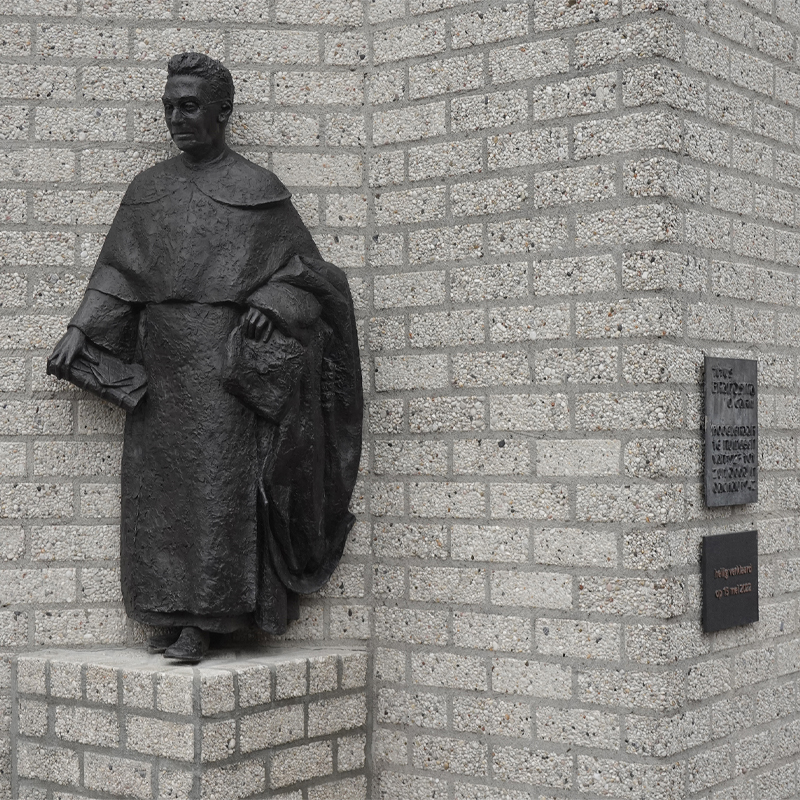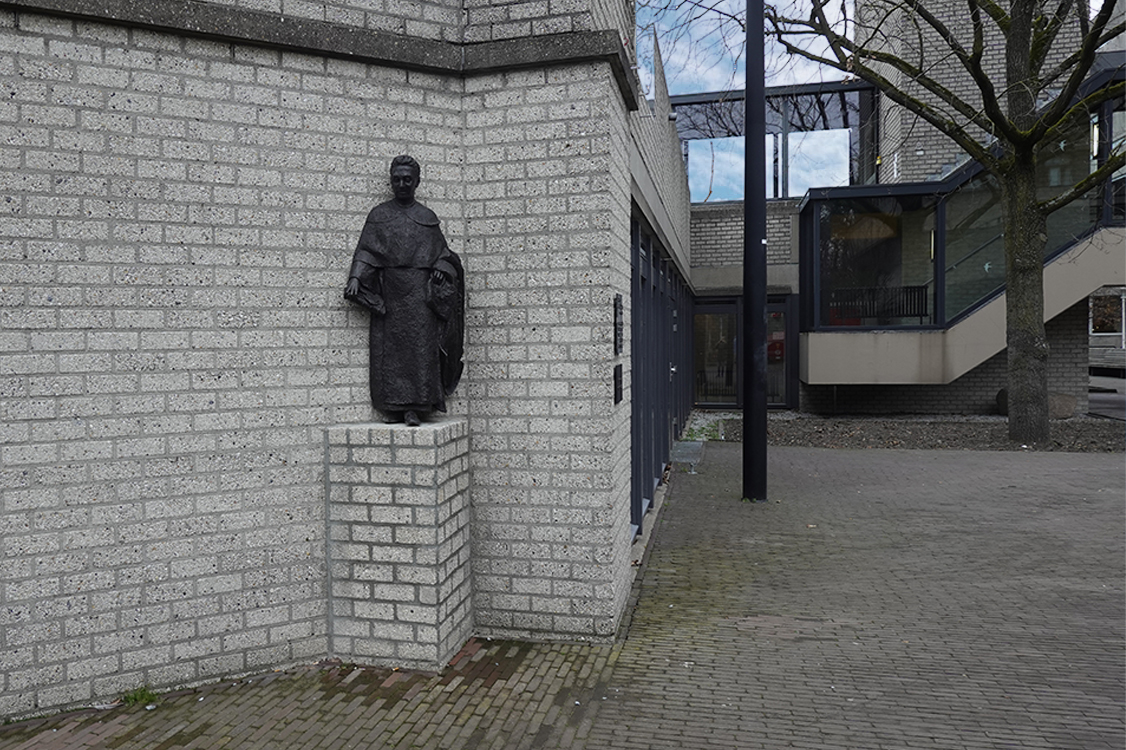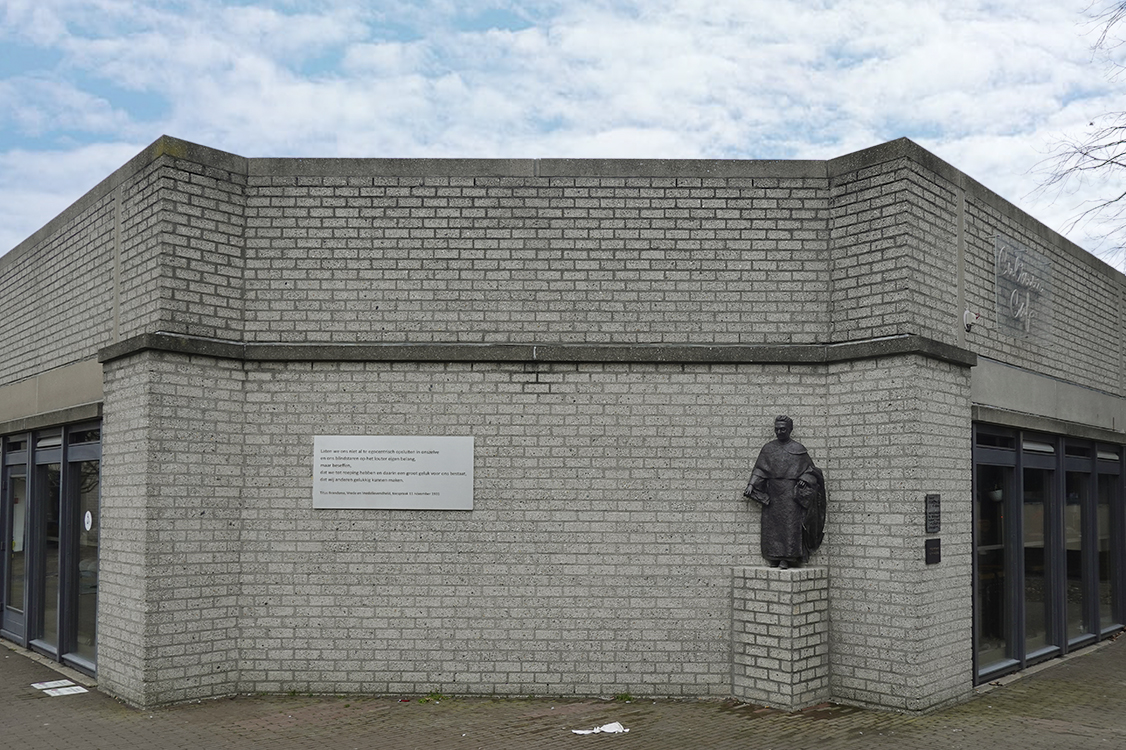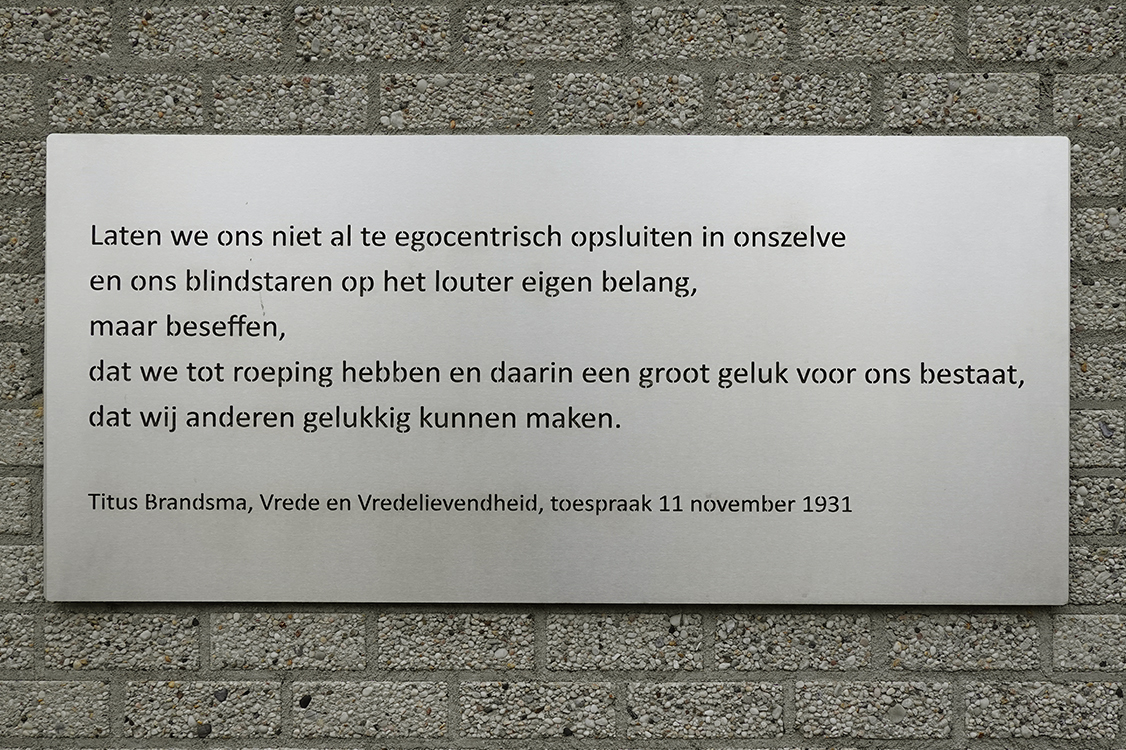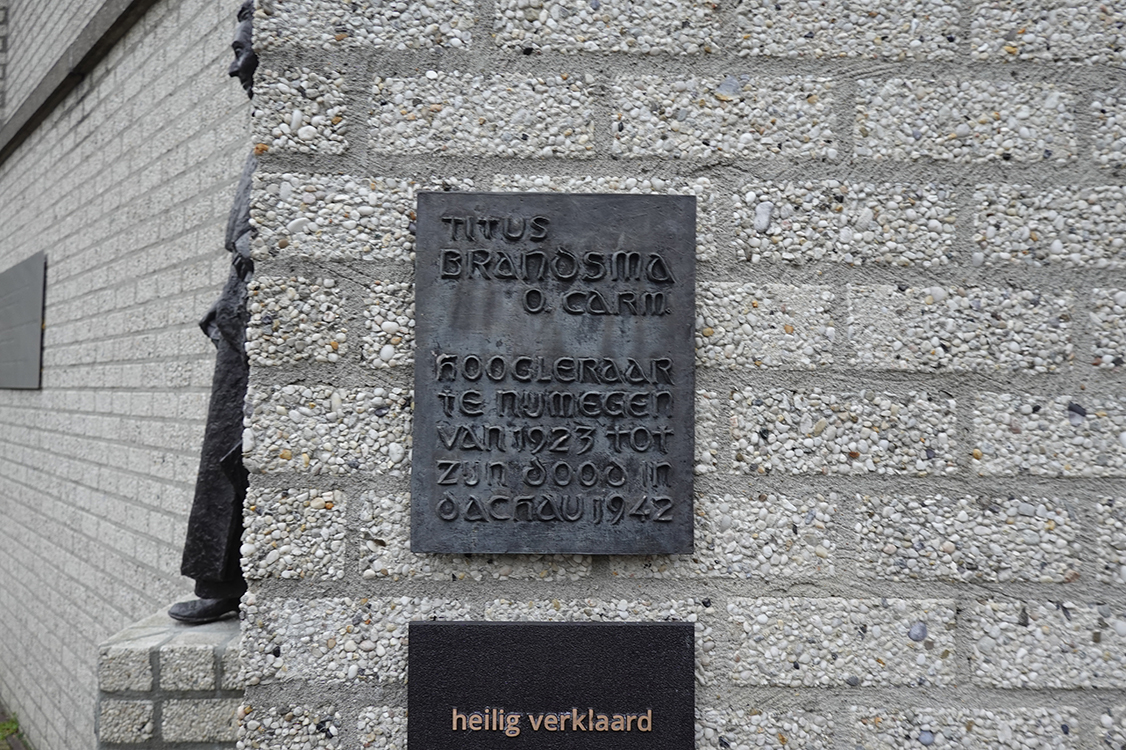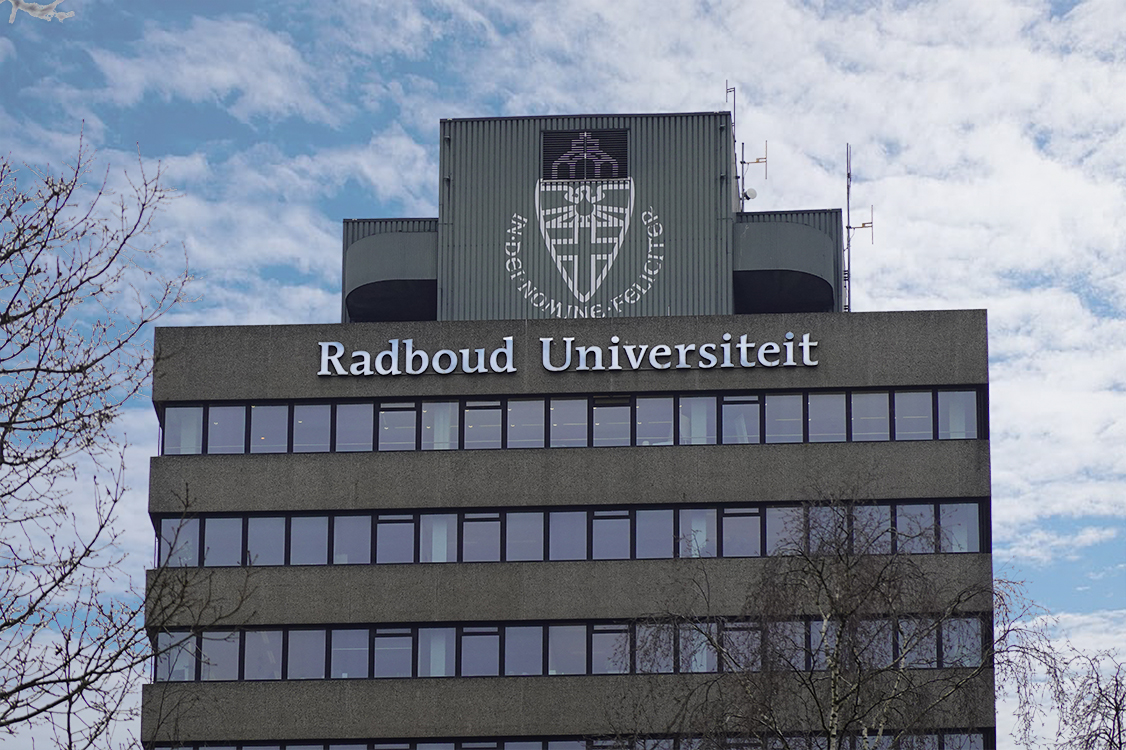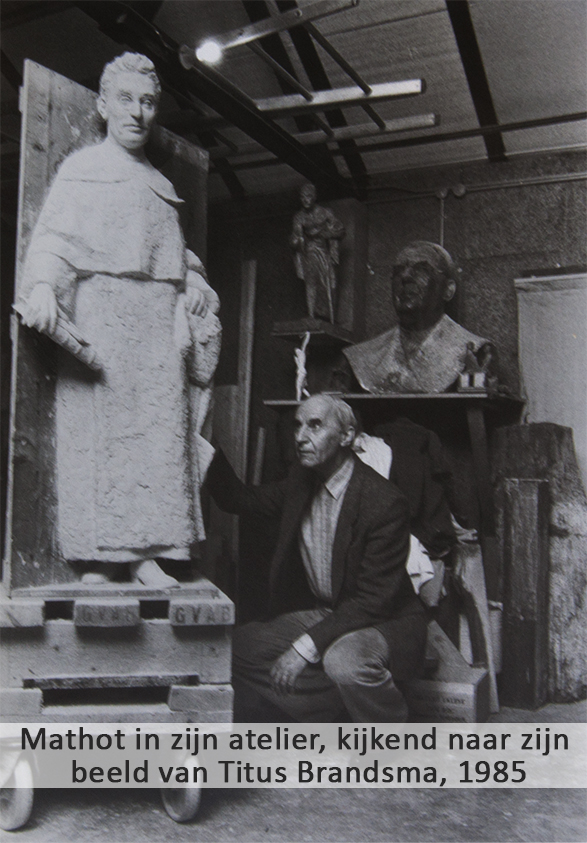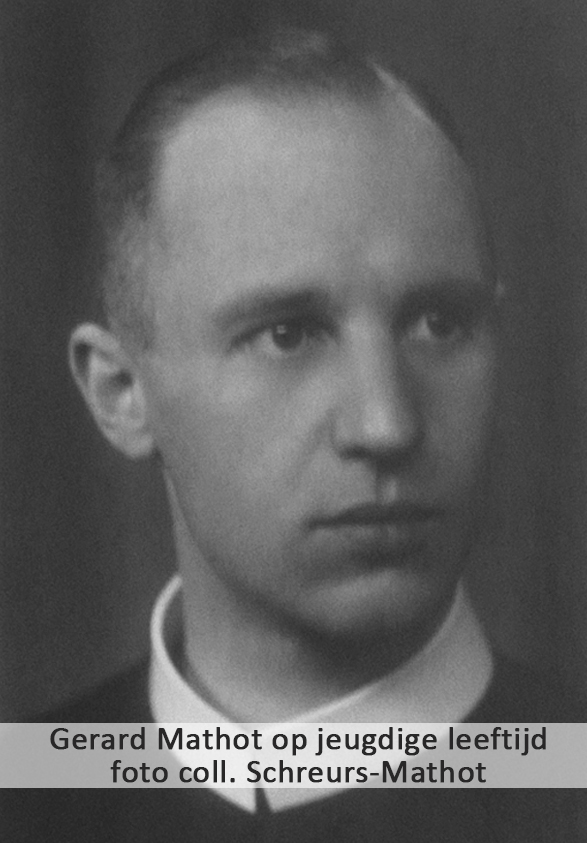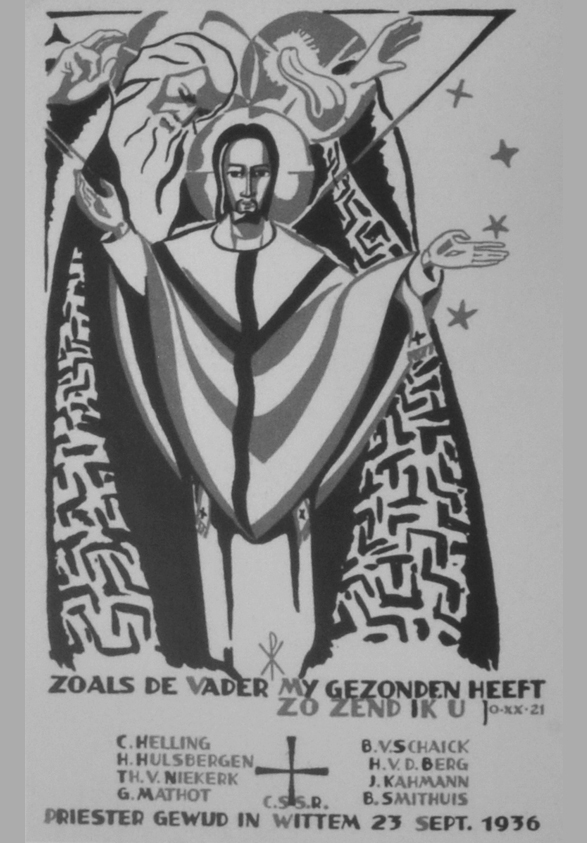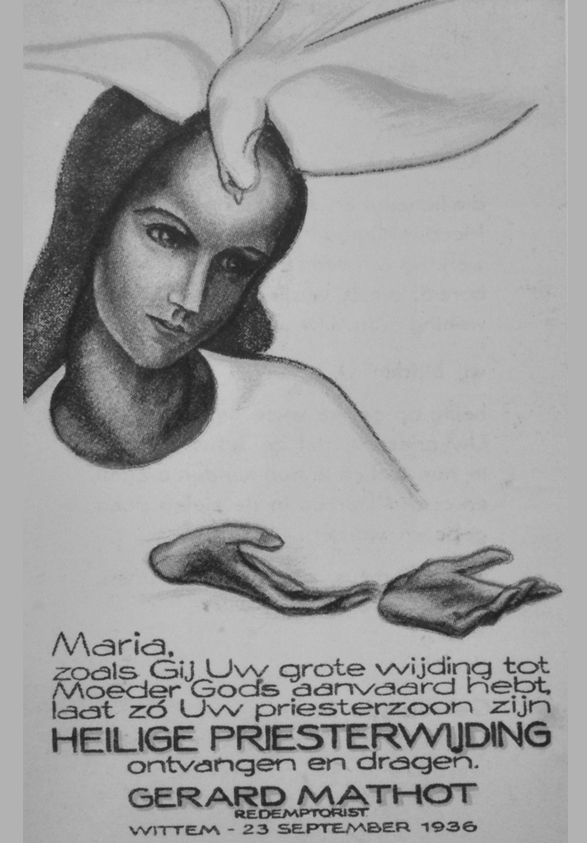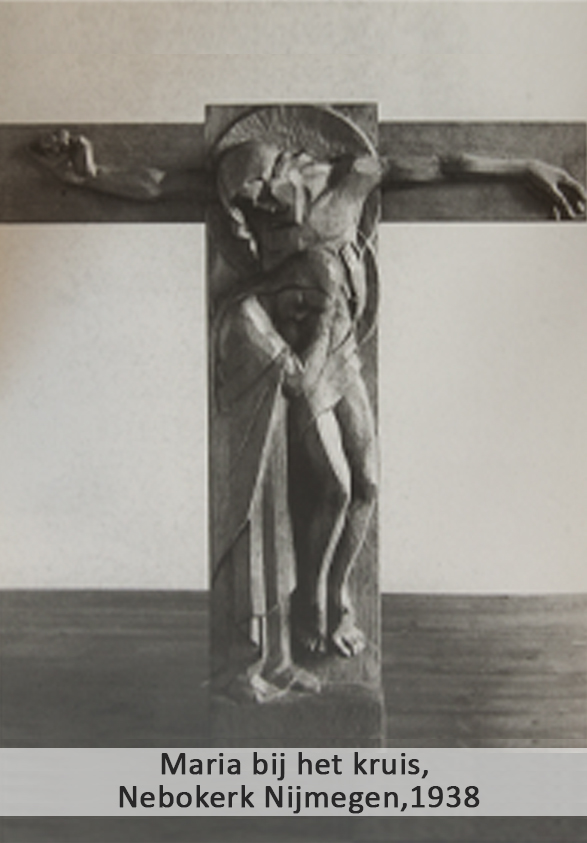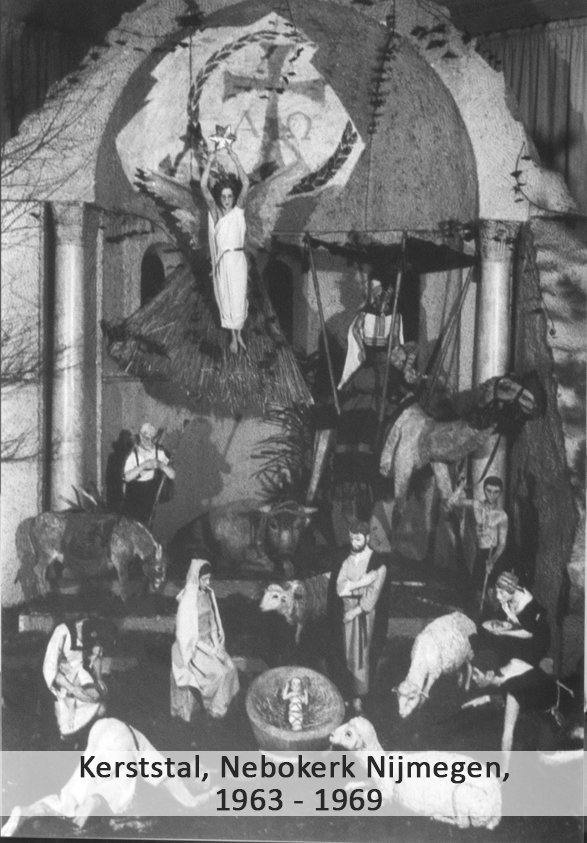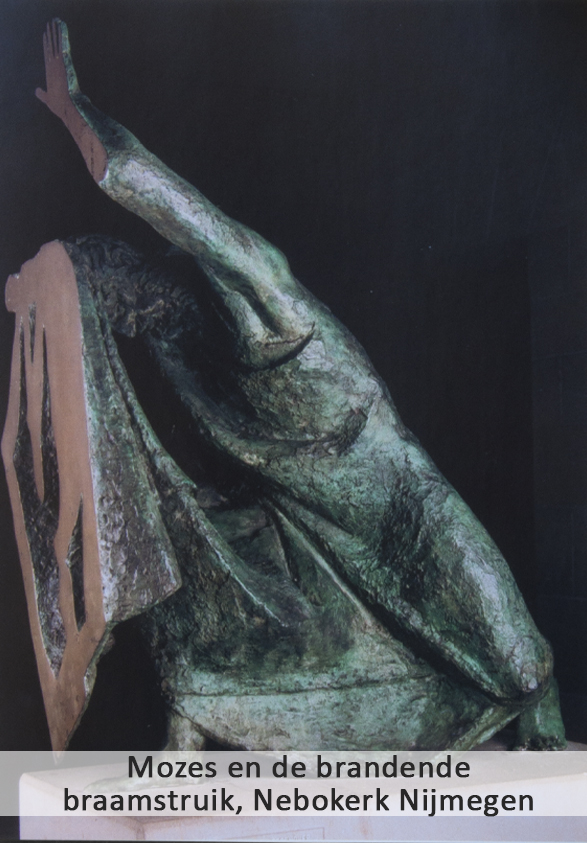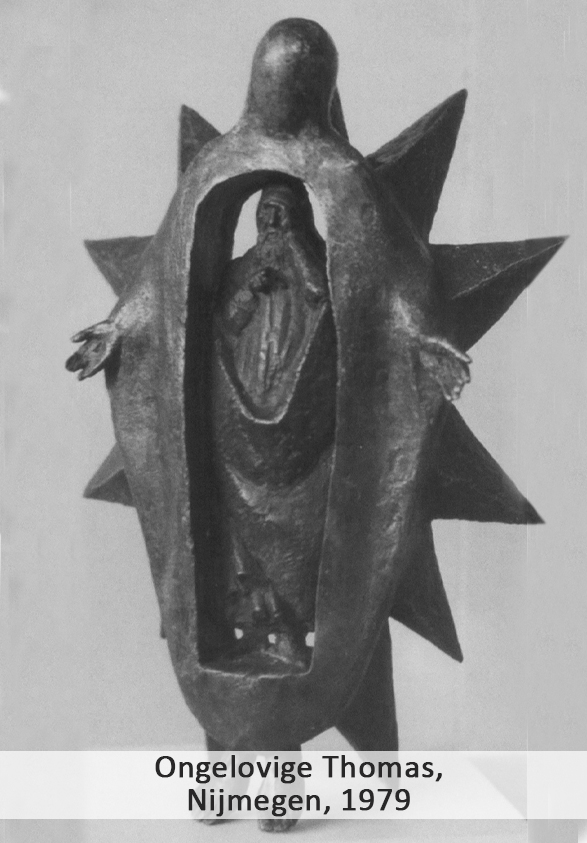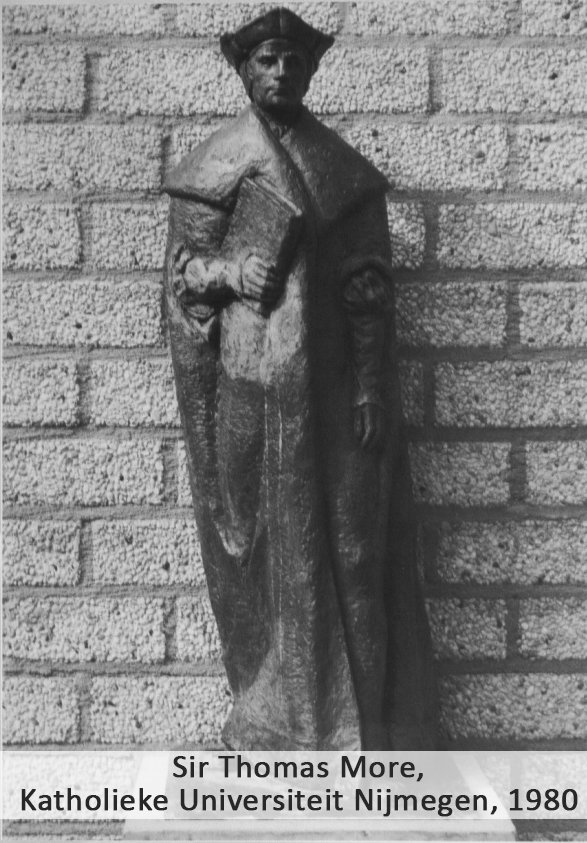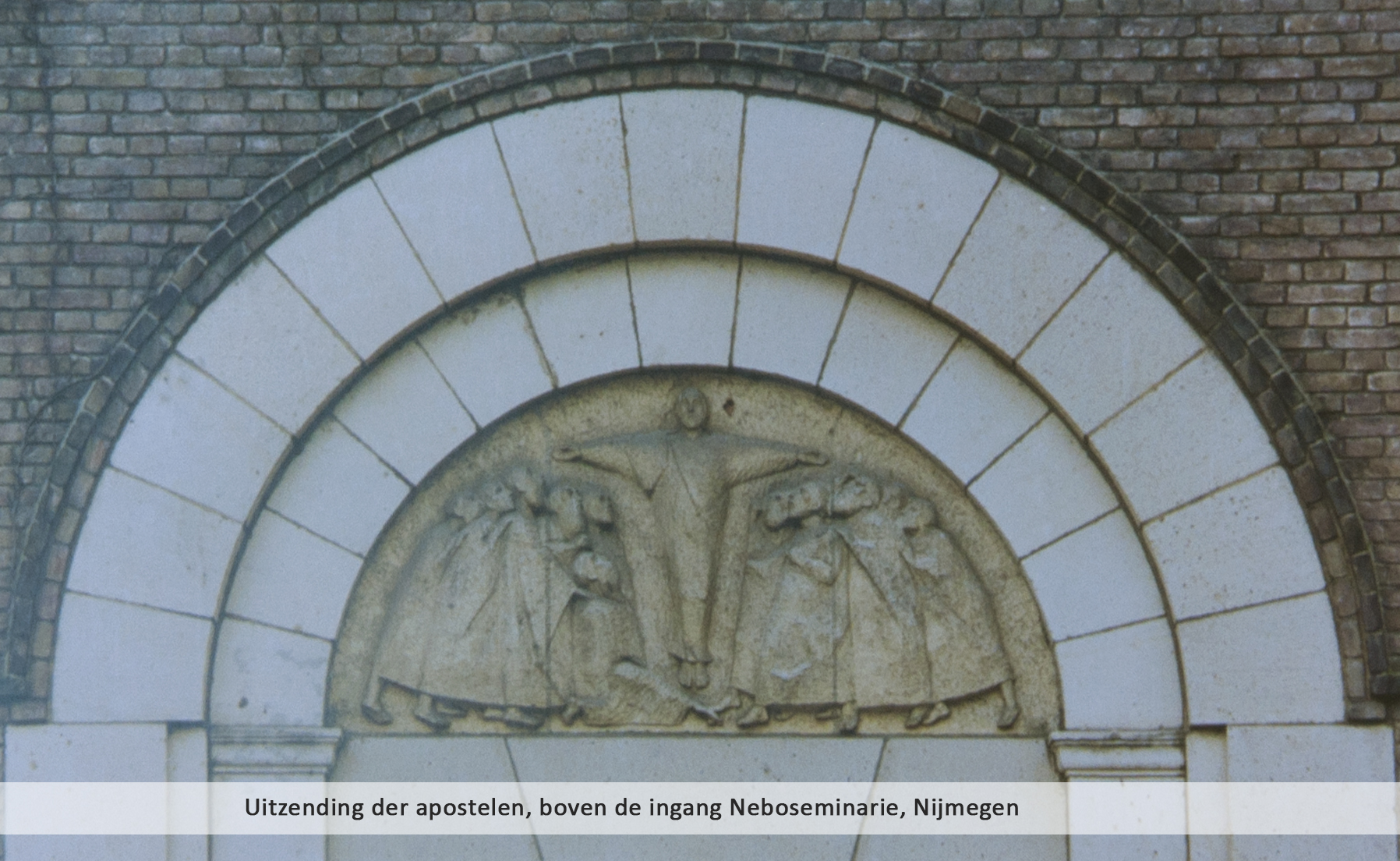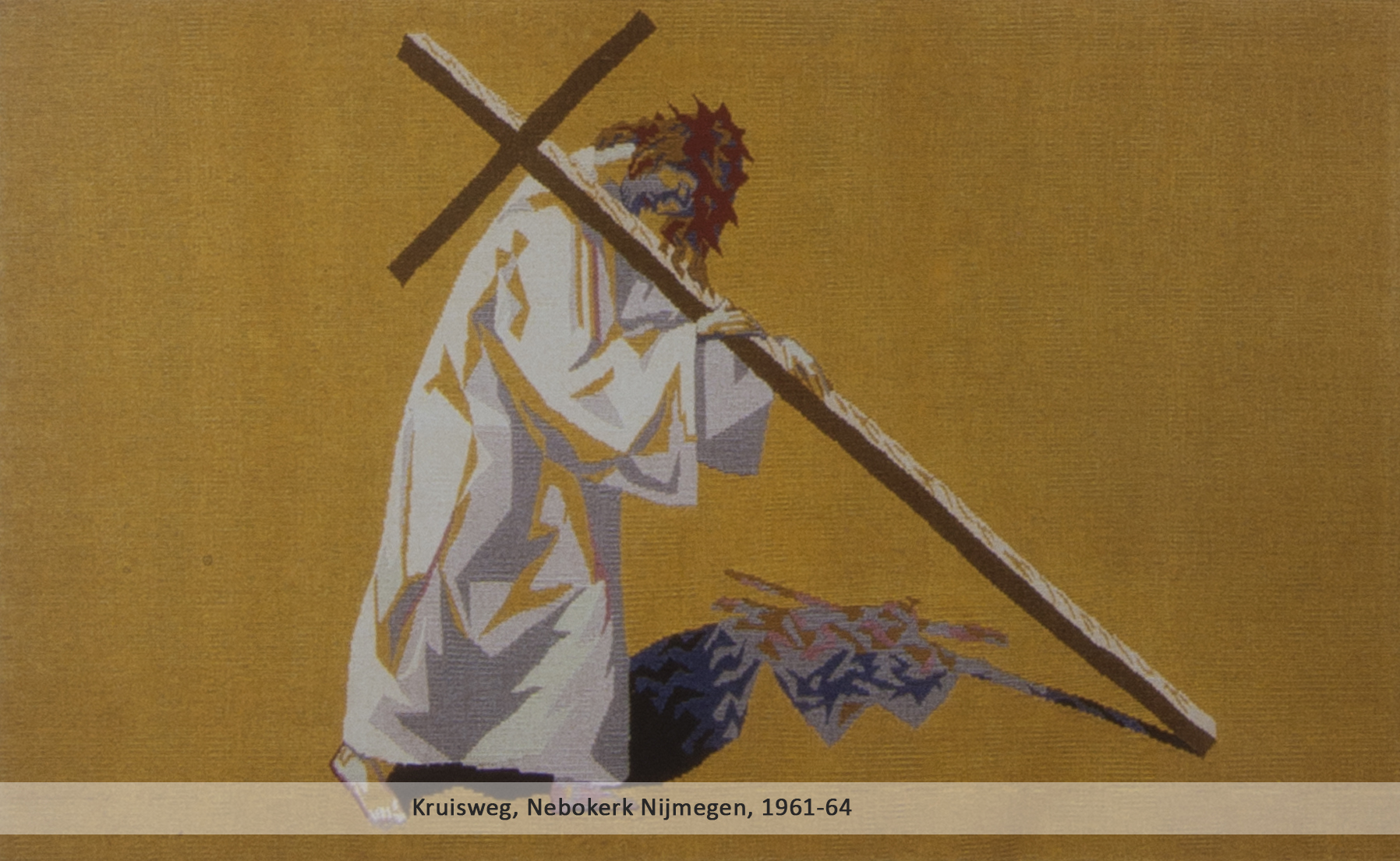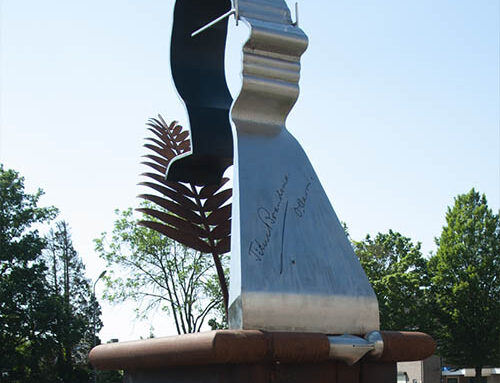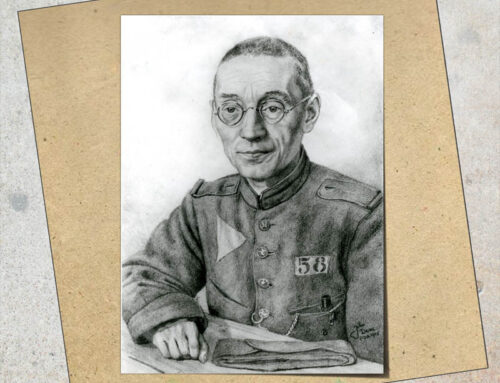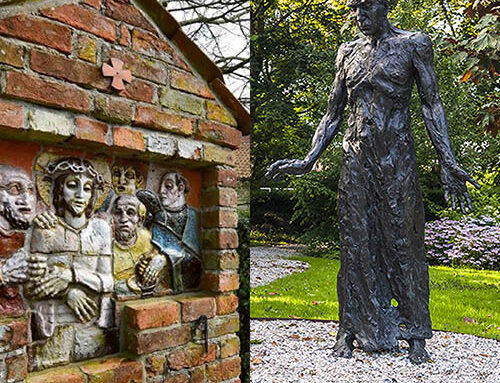
On Erasmusplein – the campus of Nijmegen University – stands a bronze statue of Titus Brandsma. Titus was a professor at the then still-named Catholic University of Nijmegen from 1923 until his death in 1943.
The Artist: Gerard Mathot
Date: 1985
Place: Erasmusplein Nijmegen
The bronze statue of Titus Brandsma and the three plaques: Titus Brandsma, the Canonization and a quote from Titus.

In 1985, Geard Mathot was honorably commissioned to create a statue of Titus Brandsma to be placed in the heart of the university campus. Titus Brandsma had been one of the greats of the early years of the university. He had been appointed professor of philosophy in 1923 and became rector magnificus in 1932. He gained notoriety outside his own circle as a hardened opponent of National Socialism.
He joined the Comité van Waakzaamheid, which united opponents of National Socialism of various denominations. In doing so, however, he was too far ahead of the Roman Catholic troops: Archbishop Johannes de Jong (himself a fierce anti-Nazi) ordered him to withdraw from this multi-party group.
During the German occupation, conflicts with the new rulers were inevitable. Brandsma vehemently opposed the Nazification of education, and within his own Catholic University he thwarted the appointment as rector magnificus of his fellow Nazi professor Theodor Baader (who would have even elicited a curse from Brandsma in 1940 by appearing at work in black uniform). Above all, however, he tried to keep the Catholic press – still widely distributed at the time – free of Nazi slurs. As “spiritual advisor” to the Nederlandsche Katholieke Journalisten Vereeniging NKJV, he urged all Catholic periodicals to refrain from placing NSB ads
refuse – “even under threat of heavy fine or of suspension or even dissolution of the newspaper in question.
A letter to this effect was followed by a tour by Titus Brandsma of the editorial boards of the Catholic press organs. The Sicherheitsdienst (SD), which considered him to be ‘a dangerous man,’ would have been informed about this by the German-minded director of the (Catholic) Dagblad van het Zuiden. A true “Judas trick,” with fatal consequences for the person concerned. On January 16, 1942, he was arrested in Nijmegen. Via the Arnhem domed prison, he was transferred to the penal prison in Scheveningen, the so-called Oranjehotel. By train. Titus allegedly urged his escorts to hurry, “because the NS are not in the habit of waiting for SDs.
The 132 cm. tall statue of Titus stands against a wall as if he were in Carmelite habit on his way to an academic ceremony, a book and a few letters in his hand and his gown and beret draped over his arm. In its size, the sculpture is a reference and reminder of a humble man. The plaque in bronze next to it, reads: Titus Brandsma O.Carm. Professor at Nijmegen from 1923 until his death in Dachau 1942. A second plaque mentions the canonization of Titus Brandsma on May 15, 2022.
Sources: Leo Ewals – Gerard Mathot, Redemptorist and Artist -2003, Sander van Walsum – Volkskrant – May 13, 2022
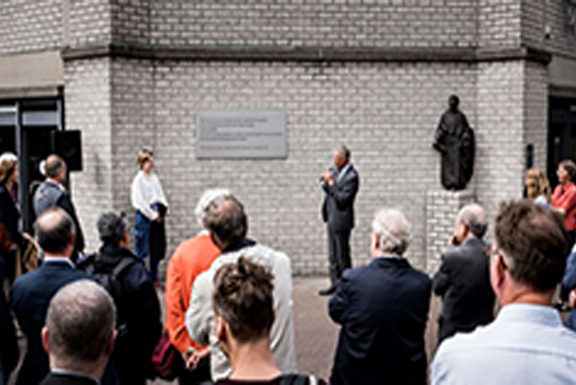
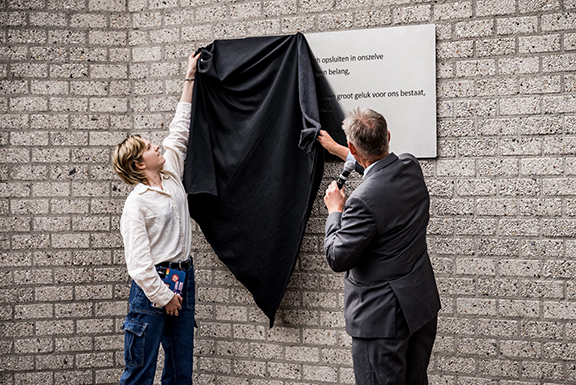
At the Culture Café this afternoon, two plaques were unveiled next to the statue of Titus Brandsma. On the occasion of the canonization of the priest, professor and rector magnificus of the Catholic University of Nijmegen, the university also organized a small symposium.
In his lecture, Joris Gerritsen, editor-in-chief of De Gelderlander – the newspaper for which Brandsma wrote 200 articles during his lifetime – asked whether we should see Titus Brandsma as a journalistic hero. Brandsma was not a fighter for free speech at De Gelderlander, Gerritsen said, but rather a guardian of the Catholic word.
Still, according to Gerritsen, De Gelderlander should be more proud of Brandsma. Brandsma may not have been a brilliant journalist, but by advocating for journalism training, he did stand up for the emancipation of journalists. ‘He is someone we should honor for his courage and moral compass,’ Gerritsen said. ‘Many journalists can take an example from that.’
Source: VOX, May 31, 2022 Ken Lambeets
For years, Radboud University students, faculty and researchers passed the bronze statue of Titus Brandsma on Thomas Aquinas Street. They saw a Titus in monastic attire, on his way to an academic ceremony, holding a book and some letters and with his gown and beret draped over his arm. Artist Gerard Mathot crafted the sculpture in 1985. When Renée Wijnhoven went looking for it recently as part of the National Commemoration of the Dead, it turned out it had been removed from the site due to construction work on campus. In the latest film in a series of videos about Heritage on Campus, she goes in search of the artwork. That search results, among other things, in conversations with rector magnificus Prof. Dr. Han van Krieken and biographer Dr. Inigo Bocken of the Titus Brandsma Institute.
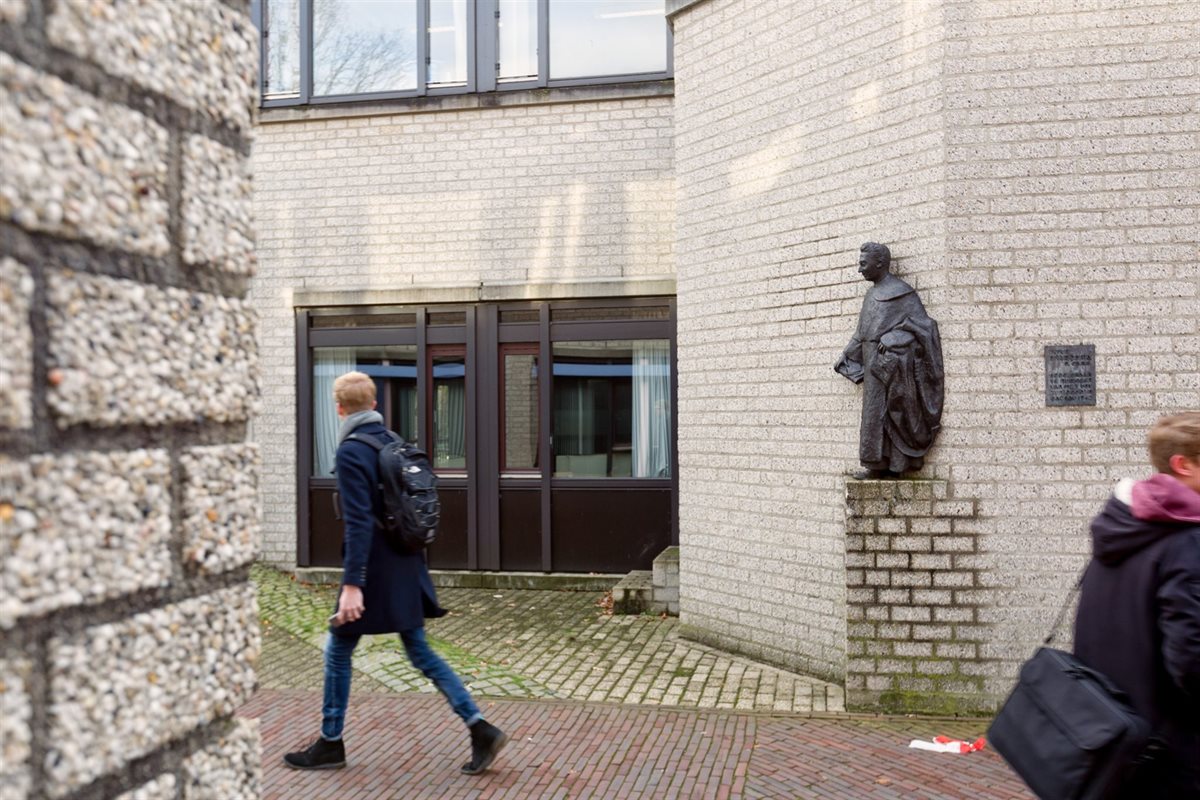
Klik hier voor de video over:
Waar is het beeld van de pater karmeliet Titus Brandsma?

Gerardus Leonardus Mathot (Boskoop, July 9, 1911 – Nijmegen, May 10, 2000) was a Dutch priest, painter, draughtsman, sculptor and artist. Gerard Mathot was a son of Representative Leonardus Hermanus Mathot (1882-1958) and Wilhelmina Margaretha Wildenburg (1885-1954). He studied at the Redemptorist seminaries and was ordained a priest by Bishop Lemmens in 1936. He then received training in art at the Genootschap Kunstoefening in Arnhem (1937-1940), under the direction of Gijs Jacobs van den Hof. He lived in the Redemptorist monastery in Wittem. During World War II, Mathot got to know the novice painter Aad de Haas, whom he put in contact with the pastor of St. Cunibertus Church in Wahlwiller. De Haas painted Stations of the Cross for the church and made illustrations for a booklet of Mathot’s Passion meditations, which appeared in early 1949. After controversy arose over De Haas’ Stations of the Cross, the Holy Office in Rome banned Mathot’s booklet. The diocese of Roermond was subsequently ordered to remove the stations (which were considered “degenerate art.”)[3] De Haas was posthumously rehabilitated nearly 50 years later.
In 1950 Mathot moved to Nijmegen, where he completed his studies in theology at the Catholic University in 1958. He lived in the Nebok monastery.
As an artist, Mathot drew, painted and sculpted, creating Christian-religious art, figure representations and liturgical work. In the 1960s, he also designed wall hangings, including a Stations of the Cross for Nebuchurch, many of which were executed by Hein ten Horn. Mathot was a member of the General Catholic Artists Association.
From 1956, Mathot served as hospital chaplain and from 1972 as rector at St. Maartens Clinic in Nijmegen. In the early 1960s he became brother prefect and in 1966 confessor to the brothers of the Institute for the Blind Henricus. He retired in 1976. In 1992 Mathot was appointed Knight of the Order of Orange-Nassau.
Mathot died in 2000 at the age of 88. Mathot’s archive is housed at the Catholic Documentation Center of the Radboud University in Nijmegen.
For nearly 75 years, Gerard Mathot created art. Some of his most famous works are the bronze Titus Brandsma in the middle of the Nijmegen University Campus, the statue of Peerke Donders in the cathedral of ‘s-Hertogenbosch and the Good Samaritan that adorns the reception hall of the VGZ building on the Brabant Gate.
Source: Wikipedia

